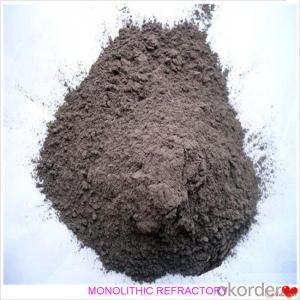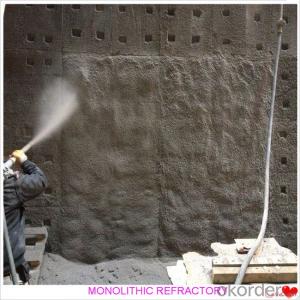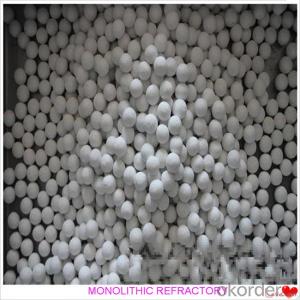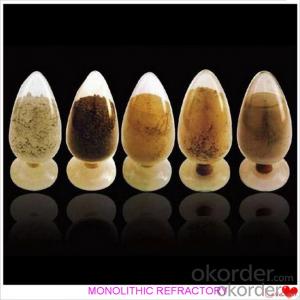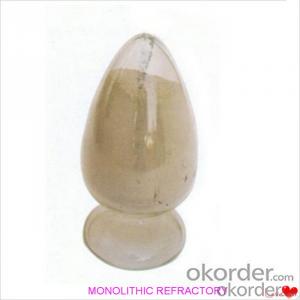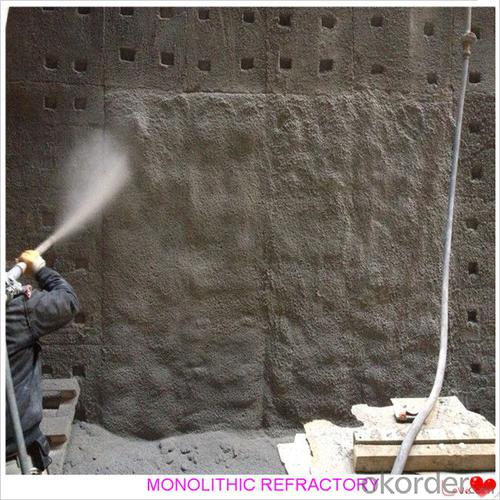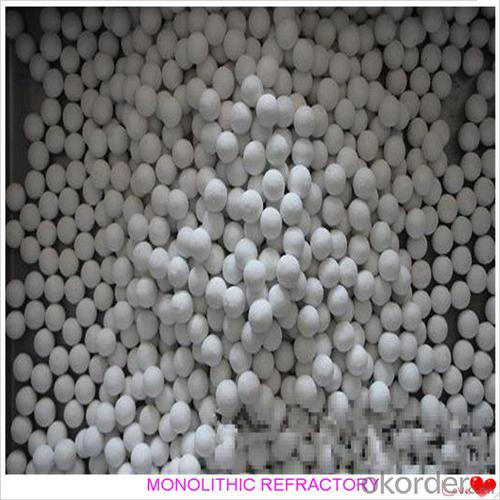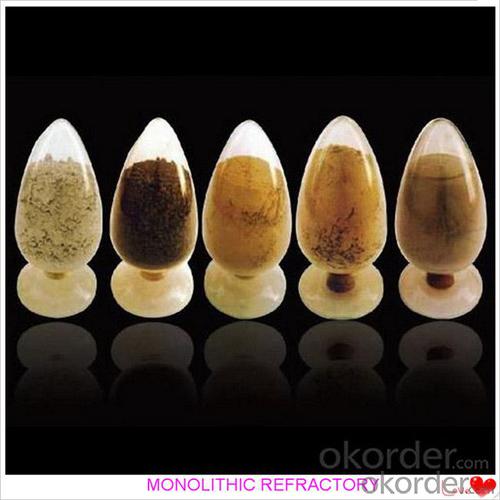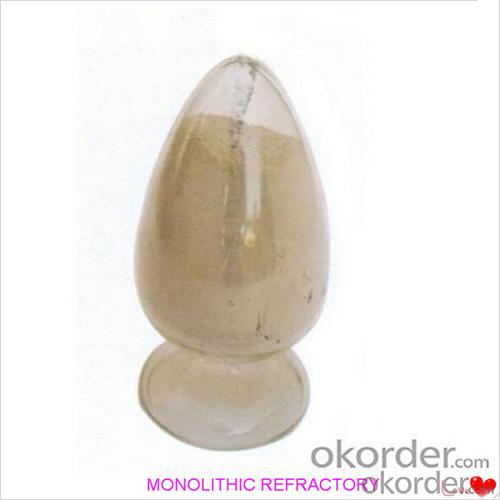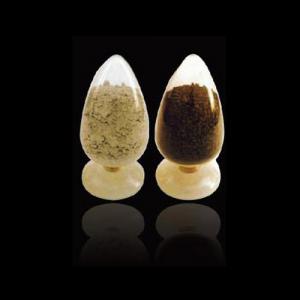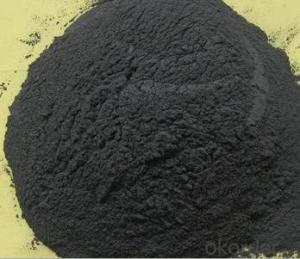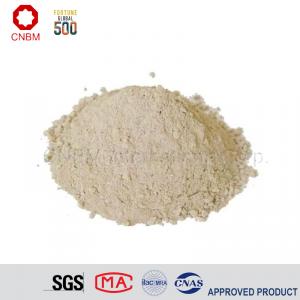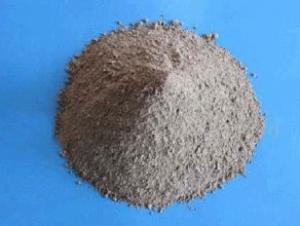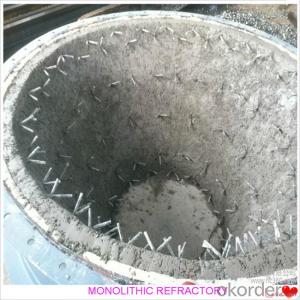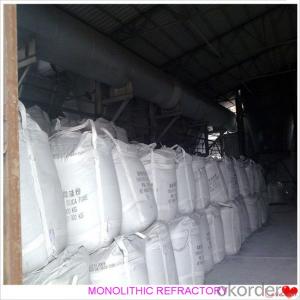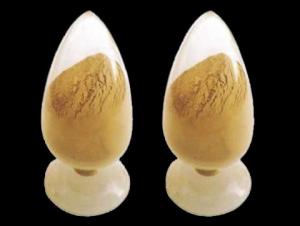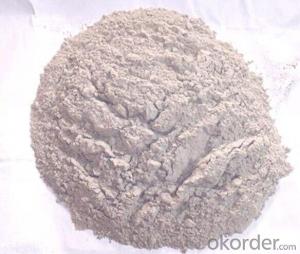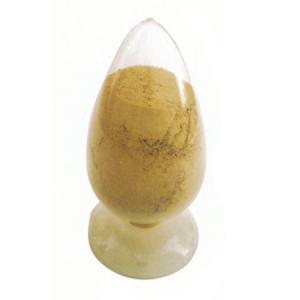Monolithic High Duty Castable Refractories for Iron and Steel Industry
- Loading Port:
- China main port
- Payment Terms:
- TT OR LC
- Min Order Qty:
- 1000 kg
- Supply Capability:
- 3000000 kg/month
OKorder Service Pledge
OKorder Financial Service
You Might Also Like
High Duty Castable For Fireplace and Industrial Furnace Cement Industry
Product Description:
High duty castable is manufactured according to international standards. The product is famous for its excellent abrasion resistance and low thermal conductivity. Further, these can be provided in different specifications as required by the clients. The High duty castables are used high purity raw materials and additives as the main material, and made of under superfine powder adding technology.
Product Advantages:
The material has excellent structural stability and air tightness, and has high physical and chemical properties, also has a fine working ability.They should be used with the same material products.
Product Applications:
For feature of High duty castable, they have excellent abrasion resistance, thermal shock resistance, high-temperature resistance, anti-corrode and have high intensity.
Designed for refractory lining of blast furnace iron and slag runners, skimmers and soon
They can be used in troughs of small and mid size BFs and in all positions of the troughs where fast tapping is required.
Product Specifications:
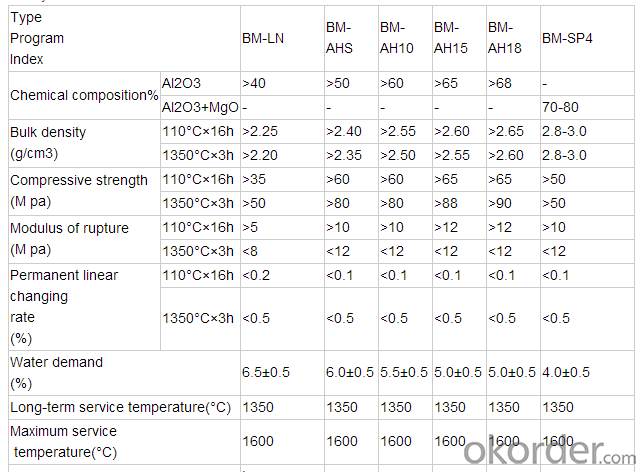
FAQ:
1. How you can control your quality?
For each production processing, we have complete QC system for the chemical composition
and Physical properties. After production, all the goods will be tested, and the quality certificate
will be shipped along with goods.
2. What's your delivery time?
It usually needs about 20days- 45 days after receiving the deposit.
3. Do you provide free samples?
Yes, we can provide a free sample for testing, If we have sample in stock,
The quantity based on the material type, The buyer should bear all the shipping costs.
4. What's your payment terms?
We can accept 30% deposit, 70% balance before shipment for ordrs over $ 2000.
5. Can we visit your Company?
Yes, certainly. You are very welcome to China and we will be honored to have a customer and friend.
Product Picture:
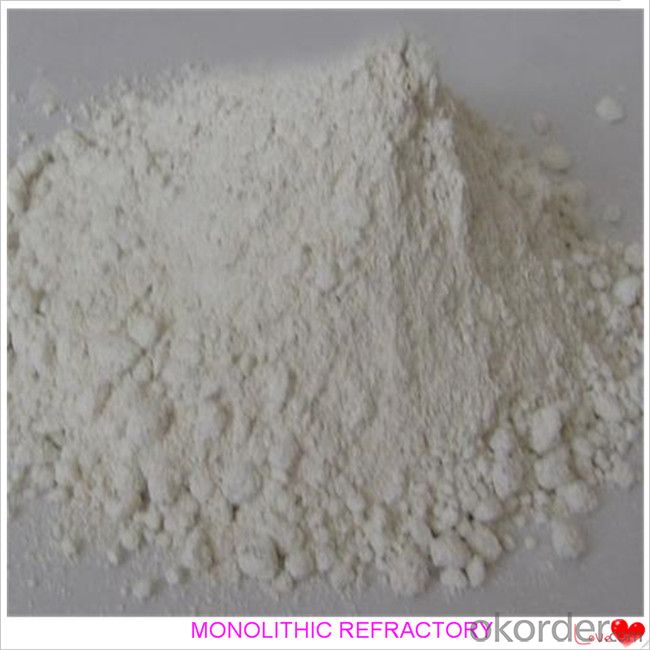
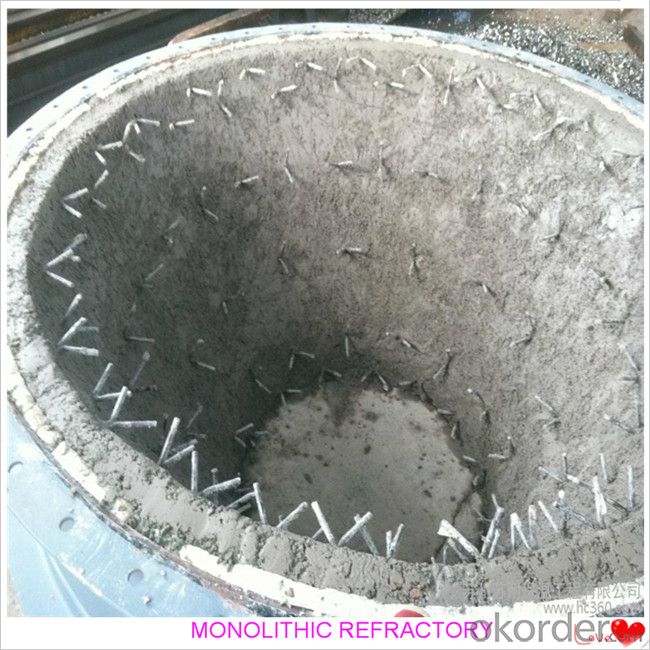
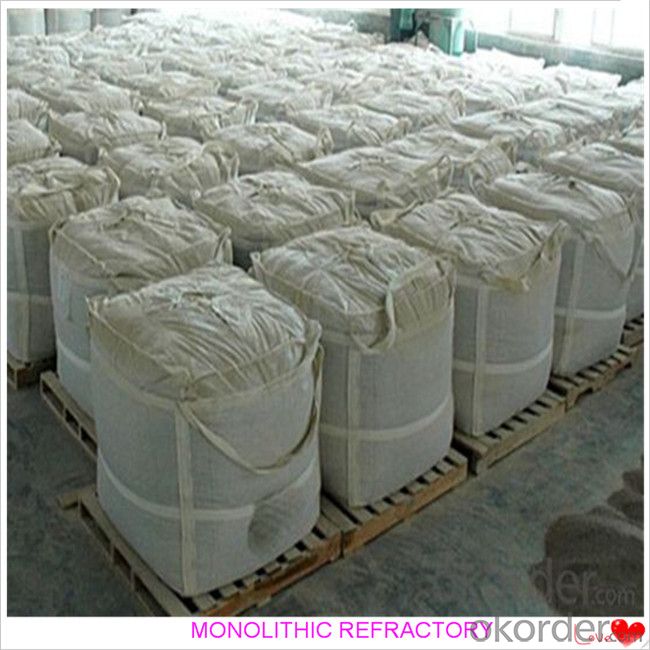
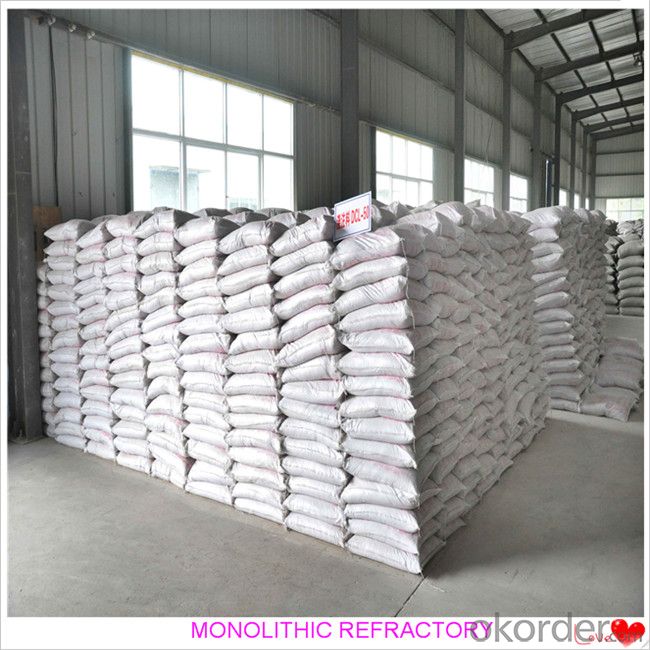
- Q: How do monolithic refractories improve the efficiency of ladle and tundish preheating furnaces?
- Monolithic refractories greatly contribute to the efficiency of ladle and tundish preheating furnaces. These refractories, made from a single material, are easily installed, repaired, and replaced, making them versatile and cost-effective. The efficiency of these furnaces is improved thanks to the outstanding thermal insulation properties of monolithic refractories. With low thermal conductivity, they effectively retain heat and prevent its escape. This insulation capability ensures an efficient preheating process, reducing energy consumption and costs by minimizing heat loss. Additionally, monolithic refractories possess high thermal shock resistance, which is crucial in ladle and tundish preheating furnaces. These furnaces experience rapid temperature changes during the pouring of molten metal, which can lead to cracking or failure of traditional refractories. However, monolithic refractories are specifically designed to withstand thermal shock, remaining intact and maintaining their insulating properties even in extreme conditions. This durability reduces downtime and maintenance requirements, thus enhancing overall efficiency. Furthermore, monolithic refractories provide a seamless and uniform lining surface, improving heat transfer within the furnace. The absence of joints or seams reduces the risk of heat leakage and ensures even distribution of heat throughout the lining. This promotes uniform heating of the ladle or tundish, allowing for more efficient preheating and better temperature control. In conclusion, the use of monolithic refractories in ladle and tundish preheating furnaces results in improved efficiency due to their exceptional thermal insulation properties, high thermal shock resistance, and ability to provide a seamless and uniform lining. These refractories minimize heat loss, reduce energy consumption, and enhance the overall performance of the preheating process.
- Q: How are monolithic refractories used in the repair and maintenance of ladle and tundish linings?
- Monolithic refractories are a type of refractory material that is commonly used in the repair and maintenance of ladle and tundish linings in the steel industry. These linings are crucial components of ladles and tundishes, which are used for the transportation and treatment of molten metal during the steelmaking process. When ladle and tundish linings are subjected to high temperatures and corrosive environments, they can deteriorate over time. This deterioration can lead to various issues such as heat loss, contamination of molten metal, and reduced refractory lining lifespan. To address these problems, monolithic refractories are used as repair and maintenance materials. Monolithic refractories are typically made from a combination of different refractory aggregates, binders, and additives. They are available in various forms, such as castables, gunning mixes, and ramming mixes. These materials are designed to be easily applied and shaped to conform to the specific geometry and dimensions of the ladle or tundish lining. During the repair process, the damaged areas of the lining are removed, and the monolithic refractories are then applied to these areas. Castables can be poured and vibrated into place, while gunning mixes can be sprayed using a high-pressure gunning machine. Ramming mixes, on the other hand, are manually compacted into the lining using a ramming tool. Monolithic refractories offer several advantages in the repair and maintenance of ladle and tundish linings. Firstly, their flexibility allows for easy installation and shaping, ensuring a snug fit to the lining. This helps to maximize the effectiveness of the refractory lining in preventing heat loss and maintaining the integrity of the ladle or tundish. Secondly, monolithic refractories have excellent thermal shock resistance and resistance to chemical attack. This makes them highly durable and capable of withstanding the harsh conditions encountered in ladles and tundishes. They can withstand repeated heating and cooling cycles without cracking or spalling, providing long-lasting protection to the lining. Lastly, monolithic refractories can be easily repaired and replaced when necessary. Their application and removal processes are relatively straightforward, allowing for efficient maintenance of ladle and tundish linings. This helps to minimize downtime and maintain the overall productivity of the steelmaking process. In conclusion, monolithic refractories play a crucial role in the repair and maintenance of ladle and tundish linings. Their ease of application, excellent thermal shock resistance, and resistance to chemical attack make them ideal materials for extending the lifespan and optimizing the performance of these linings in the steel industry.
- Q: What are the key properties of ramming mixes used for monolithic refractory installations?
- The key properties of ramming mixes used for monolithic refractory installations include high density, good flowability, high strength, excellent thermal shock resistance, chemical resistance, and low porosity. These properties ensure the ramming mix can be compacted easily during installation, withstand high temperatures without cracking, and resist chemical attacks from molten metals or corrosive gases. Additionally, low porosity helps to minimize heat loss and enhance the overall performance and longevity of the refractory lining.
- Q: How do monolithic refractories contribute to energy efficiency in the iron and steel industry?
- Various mechanisms are employed by monolithic refractories to enhance energy efficiency in the iron and steel industry. The first mechanism is their exceptional thermal insulation properties, which minimize heat loss from furnaces and high-temperature equipment. This efficient utilization of heat generated during production leads to significant energy savings. Another important feature of monolithic refractories is their ability to withstand rapid temperature changes without cracking or spalling, known as thermal shock resistance. This quality is crucial in an industry where extreme temperature variations are common. By maintaining their structural integrity, these refractories prevent heat leakage and ensure effective energy utilization. Furthermore, monolithic refractories contribute to energy efficiency by reducing downtime and improving operational efficiency. Their easy installation and repair result in shorter maintenance cycles, minimizing the time required for furnace maintenance. This allows for continuous operation and uninterrupted energy utilization. Additionally, their high durability reduces the need for frequent replacements, further enhancing energy efficiency by reducing material and energy waste associated with regular repairs. In conclusion, monolithic refractories play a significant role in enhancing energy efficiency in the iron and steel industry. Their properties, such as thermal insulation, thermal shock resistance, and ease of installation and repair, ensure effective energy utilization and substantial energy savings. Improved operational efficiency and reduced downtime further contribute to overall energy efficiency.
- Q: What are some common applications of monolithic refractories in the iron and steel industry?
- Some common applications of monolithic refractories in the iron and steel industry include lining of ladles, tundishes, and converters, as well as repairs and maintenance of furnaces, kilns, and other high-temperature equipment. They are also used for the construction of runners, troughs, and spouts in continuous casting processes.
- Q: How do monolithic refractories contribute to the overall reliability of iron and steel processes?
- Monolithic refractories play a significant role in enhancing the overall reliability of iron and steel processes. These refractories are specifically designed to withstand extreme temperatures and harsh conditions found in iron and steel manufacturing environments. One key contribution of monolithic refractories is their ability to provide superior insulation. They have low thermal conductivity, which significantly reduces heat loss from the furnace or kiln. This insulation property allows for efficient energy usage and helps maintain stable operating conditions, leading to consistent and reliable production. Additionally, monolithic refractories offer excellent resistance to chemical attacks from molten metals, slag, and other corrosive substances. They can withstand the high alkalinity and high temperature of molten iron and steel, preventing any damage to the refractory lining. This resistance ensures the longevity of the refractory material, minimizing the need for frequent maintenance and replacement, thus contributing to the overall reliability of the iron and steel processes. Moreover, monolithic refractories exhibit good mechanical strength and stability, even at elevated temperatures. This strength allows them to withstand the mechanical stresses and strains exerted during the iron and steel manufacturing processes, such as thermal cycling, mechanical impact, and abrasion. By maintaining their structural integrity, monolithic refractories prevent the formation of cracks or spalling, which could lead to downtime or even catastrophic failure. This reliability ensures uninterrupted operations and reduces the risk of costly shutdowns. Furthermore, monolithic refractories offer flexibility in terms of installation and repair. They can be easily shaped and applied to various furnace shapes and sizes, allowing for efficient lining construction. Additionally, monolithic refractories can be repaired or patched quickly, minimizing downtime and maintaining the operational reliability of the iron and steel processes. In conclusion, monolithic refractories contribute to the overall reliability of iron and steel processes by providing superior insulation, resistance to chemical attacks, mechanical strength, and flexibility in installation and repair. By ensuring consistent performance, durability, and reduced maintenance requirements, monolithic refractories play a crucial role in optimizing the efficiency and reliability of iron and steel manufacturing operations.
- Q: How do monolithic refractories contribute to the overall efficiency of ladle cleaning operations?
- Monolithic refractories contribute to the overall efficiency of ladle cleaning operations by providing a durable and heat-resistant lining that can withstand high temperatures and chemical reactions. This lining helps to prevent the erosion and corrosion of the ladle, ensuring its longevity and reducing the need for frequent repairs or replacement. Additionally, monolithic refractories offer excellent thermal insulation, which helps to maintain the desired temperature of the ladle's contents and minimize heat loss. This ultimately improves the ladle's efficiency and reduces energy consumption during ladle cleaning operations.
- Q: What are the key factors affecting the installation and curing of monolithic refractories?
- There are several key factors that can affect the installation and curing of monolithic refractories. These factors include the selection of the appropriate refractory material, proper surface preparation, correct mixing and application techniques, controlled drying and curing process, and adherence to manufacturer's guidelines and recommendations. Additionally, factors such as temperature, humidity, and atmospheric conditions can also impact the installation and curing of monolithic refractories.
- Q: What are the typical applications of monolithic refractories in blast furnaces?
- Due to their unique properties and applications, monolithic refractories find extensive use in blast furnaces. These refractories consist of a single, uniform material that can be shaped and installed in various forms without the need for joints or seams. This particular characteristic makes them highly suitable for lining and safeguarding the different zones of a blast furnace. One common use of monolithic refractories in blast furnaces is for lining the hearth, which is the lowermost part of the furnace where molten iron and slag collect. Monolithic refractories are employed to create a sturdy and heat-resistant lining capable of withstanding the extreme temperatures and chemical reactions that occur in this region. Another frequent application is the lining of the bosh, the transitional zone between the hearth and the blast furnace's stack. The bosh is subjected to elevated temperatures and mechanical stresses resulting from the movement of burden materials. To ensure its longevity and efficiency, monolithic refractories with high thermal shock resistance and abrasion resistance are utilized. Monolithic refractories are also utilized for lining the stack and the tuyere area. The stack refers to the vertical portion of the furnace where iron ore reduction takes place, while the tuyere area is where hot air blast is injected into the furnace. Both these areas necessitate refractories capable of withstanding high temperatures, chemical reactions, and mechanical stresses. Moreover, monolithic refractories find application in the repair and maintenance of blast furnaces. Due to the harsh conditions inside the furnace, the lining may deteriorate over time. Monolithic refractories can be easily applied as patching materials to restore the lining's integrity and extend the furnace's lifespan. In summary, monolithic refractories play a crucial role in blast furnaces by lining the hearth, bosh, stack, and tuyere area, as well as facilitating repairs and maintenance. These refractories offer exceptional thermal shock resistance, abrasion resistance, and durability, making them indispensable for the efficient operation of blast furnaces in the iron and steel industry.
- Q: What are the specific requirements of monolithic refractories for continuous casting applications?
- To withstand the extreme temperatures and thermal shock conditions experienced during continuous casting, monolithic refractories have specific requirements. First and foremost, these refractories must possess high thermal conductivity, enabling them to efficiently transfer heat away from the molten metal and maintain a stable casting temperature. This is crucial in preventing the formation of defects such as cracks, hot spots, and uneven solidification in the cast product. Secondly, monolithic refractories for continuous casting applications need to exhibit high refractoriness. This means they can endure the high temperatures of the molten metal without melting or deforming, ensuring the refractories can provide a protective lining and maintain their structural integrity throughout the casting process. In addition, these refractories must demonstrate excellent resistance to thermal shock. The continuous casting process involves rapid cooling and heating cycles, resulting in significant temperature differentials and inducing thermal stresses. Monolithic refractories with low thermal expansion and high thermal shock resistance can endure these conditions without cracking or spalling. Moreover, good erosion and corrosion resistance are vital requirements for monolithic refractories in continuous casting applications. The molten metal and slag can be highly corrosive and abrasive, causing wear and chemical attack on the refractory lining. Therefore, refractories with high resistance to erosion and corrosion are essential to ensure the longevity and stability of the lining. Lastly, monolithic refractories for continuous casting applications should possess good workability and ease of installation. This allows for efficient and precise lining installation, minimizing downtime during maintenance or repairs. Overall, the specific requirements for monolithic refractories in continuous casting encompass high thermal conductivity, refractoriness, thermal shock resistance, erosion and corrosion resistance, as well as good workability. Fulfilling these requirements guarantees that the refractories effectively safeguard the casting equipment and maintain the quality of the cast products.
Send your message to us
Monolithic High Duty Castable Refractories for Iron and Steel Industry
- Loading Port:
- China main port
- Payment Terms:
- TT OR LC
- Min Order Qty:
- 1000 kg
- Supply Capability:
- 3000000 kg/month
OKorder Service Pledge
OKorder Financial Service
Similar products
Hot products
Hot Searches
Related keywords

